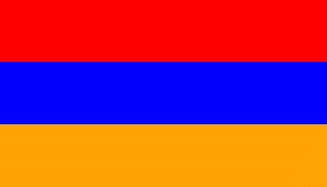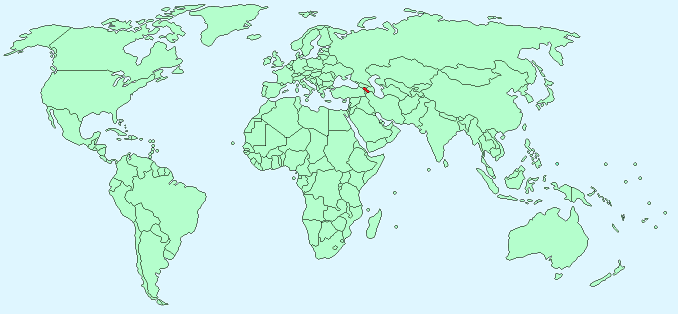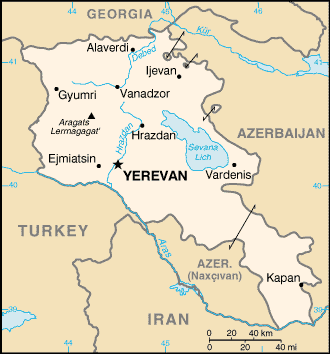Armenia


Continent – Asia
Region – Western Asia
Size – 29,800 km²
Geography – Mountainous
Language – Armenian, Yezidi, Russian
Religion – 97% Armenian Apostolic 2% Islam, Judaism, Protestant, Roman Catholic
Monetary Unit – Dram
Natural Resources – Gold, copper, zinc, aluminium, molybdenum, bauxite
Agriculture – fruit (especially grapes), vegetables; livestock
Industry – diamond-processing, metal-cutting machine tools, forging-pressing machines, electric motors, tires, knitted wear, hosiery, shoes, silk fabric, chemicals, trucks, instruments, microelectronics, jewelry manufacturing, software development, food processing, brandy

Neighbouring Countries – Georgia, Azerbaijan, Iran, Turkey
Population – 3,060,631 (2014)
Population Growth Rate – 0.1%
Average Life Expectancy – 72.1
Capital City – Yerevan (population 1,060,138)
Highest Mountain – Aragats (4,095 m)
Longest River – Aras (1,072 km)
Climate – cold, snowy winters -9°C to 10°C and warm, dry summers 14°C to 34°C
Yearly Rainfall – 32 cm approx
Plant Life – 3500+ species of plants including oak, beech, pine, marshland, alpine species, wild grain, desert plants, apricot, apple, pear, cherry, mazzard, plum, pomegranate, grape
Animal Life – wild Armenian goat, deer, wild ram, leopard, Caucasian bear, lynx, wildcat, Reed wildcat, wild Boar, porcupine, squirrel, jackal, mole, prairie dog, marten, royal stag, nutria
Harvard Reference for this page:
Heather Y Wheeler. (2015). Armenia. Available: https://www.naturalhistoryonthenet.com/Facts_Figures/Country_Facts/armenia.htm. Last accessed Monday, July 18, 2016
Facts and Figures Pages
